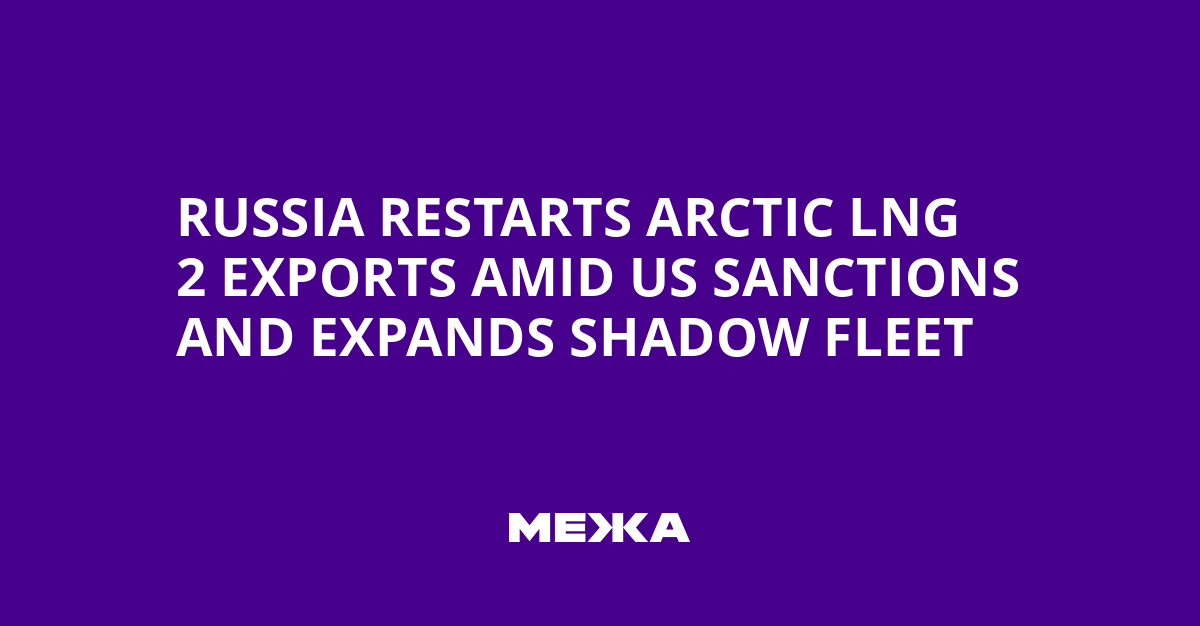Russia is once again ramping up its efforts to export liquefied natural gas (LNG) from the Arctic LNG 2 terminal, which had been suspended for eight months due to U.S. sanctions. Currently, Moscow is seeking buyers willing to ignore Western restrictions and is also expanding its “shadow fleet,” according to Bloomberg.
According to data obtained through vessel tracking and satellite imagery, an LNG carrier recently docked at the Arctic LNG 2 terminal – the first time since October 2024. After Russia’s full-scale invasion of Ukraine began, gas exports to Europe significantly declined, making LNG tanker shipments an important source of revenue for Russia.
To support the Arctic LNG 2 project, Russia has deployed at least 13 vessels capable of navigating icy waters. Some of these ships have repeatedly changed their managing companies to conceal their true owners. Among them are:
four vessels capable of operating in frozen waters around Arctic LNG 2: three are idling in the Barents Sea, one is near the terminal;
three conventional LNG carriers also located in the Barents Sea;
two vessels undergoing repairs in China, with another likely heading there;
one vessel stationed near a floating storage unit in Russia’s Far East;
two vessels idling in the Gulf of Finland.
Malte Humpert, founder of the Arctic Institute at a Washington think tank, noted:
“Russia currently has more vessels at its disposal than it did in the summer or fall of 2024. If buyers can be found, this small fleet will be sufficient to transport cargo.”
According to information gathered by Bloomberg, between August and October 2024, eight shipments of gas were exported from Arctic LNG 2, but none reached foreign ports. The gas was transshipped to two Russian storage facilities in the Barents Sea and the Far East. In October 2024, production was halted due to icy conditions that prevented conventional vessels from accessing the terminal.
Sanctions against Arctic LNG 2 were imposed by the Biden administration in September 2024. It remains unclear whether the Trump administration would maintain the same strictness or impose restrictions on ports receiving this fuel. As the publication notes, the threat of U.S. retaliation deterred potential buyers last year.
Traders report that officials connected to the Arctic LNG 2 project have spent the past year trying to find buyers, making trips to India and China, but no successful sales have been confirmed so far.
The tanker “Iris,” currently stationed near the Arctic LNG 2 terminal, may take a short Arctic route to Asia this summer, where potential buyers are willing to circumvent Western sanctions.
Recall that on September 5, 2024, the U.S. State Department imposed sanctions on two companies and two vessels linked to LNG exports under the Arctic LNG 2 project. These sanctions were introduced in response to Russia’s full-scale war against Ukraine to increase global pressure on the Russian Federation.
In October 2024, it became known that the Arctic LNG 2 gas terminal had suspended the liquefaction process due to stockpiling caused by difficulties in transportation and sales amid sanctions.
Restrictions on Russian Gas
On December 22, 2022, the European Union set a price cap on gas at 180 euros per megawatt-hour. From January 1, 2023, the United Kingdom completely stopped importing Russian LNG.
In October 2023, Lithuania announced a ban on the import, loading, and regasification of Russian LNG starting November of the same year. In April 2023, the Netherlands also planned to cease imports of Russian liquefied gas.
Energy expert Yuriy Korolchuk explained that the EU’s price cap aims to control the cost of LNG entering the European market through LNG terminals. At the same time, he warned that in the event of a major gas shortage or a tough stance from suppliers, Europe could find itself trapped in a deficit due to this pricing policy.
